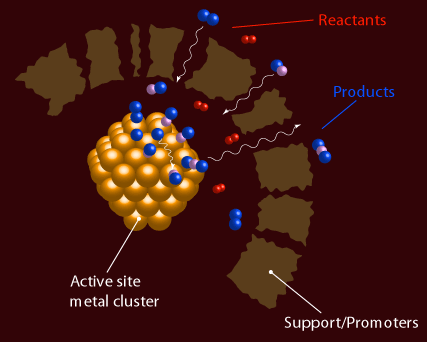




Development
of nanostructured catalyst for hydrogen production and purification
The catalytic performances of a system are strongly related to its structural
features [1, 2]. In these last years the use of innovative or improved
preparation methods have been employed in order to exploit, in a more
profitable way, the properties at nanometer level to improve the performance
of a catalytic system. The awareness that specific reactions require tailored
structure with different functionality has driven the scientists to figure
on more and more complex catalysts . Very often, for example, in order
to control the size of the particles, to avoid sintering among them, to
have more than one active phase, it is necessary to prepare real nanoarchitectures
where different components have a specific function. In order to improve
the catalytic performances of materials involved in hydrogen production
and purification reactions we have designed stable and active embedded
catalysts using Rh, Au, Pd for :
>
Partial Oxidation and Steam Reforming of Methane;
> Ethanol and Methanol Steam Reforming;
> PReferential OXidation (PROX) and Water Gas Shift Reaction (WGSR)


Selected
recent publications
1. M. Cargnello, N. L. Wieder, T. Montini, R. J. Gorte and P. Fornasiero,
"Synthesis of dispersible Pd@CeO2 nanostructures
by self-assembly.", Journal of the American Chemical Society 132
(2010), 1402-1409, doi:10.1021/ja909131k.
2. M. Cargnello, T. Montini, S. Polizzi, N. L. Wieder, R. J. Gorte, M.
Graziani and P. Fornasiero, “Novel embedded Pd@CeO2
catalysts: a way to active and stable catalysts.”, Dalton Transactions
39 (2010), 2122-2127,doi:10.1039/b916035c.